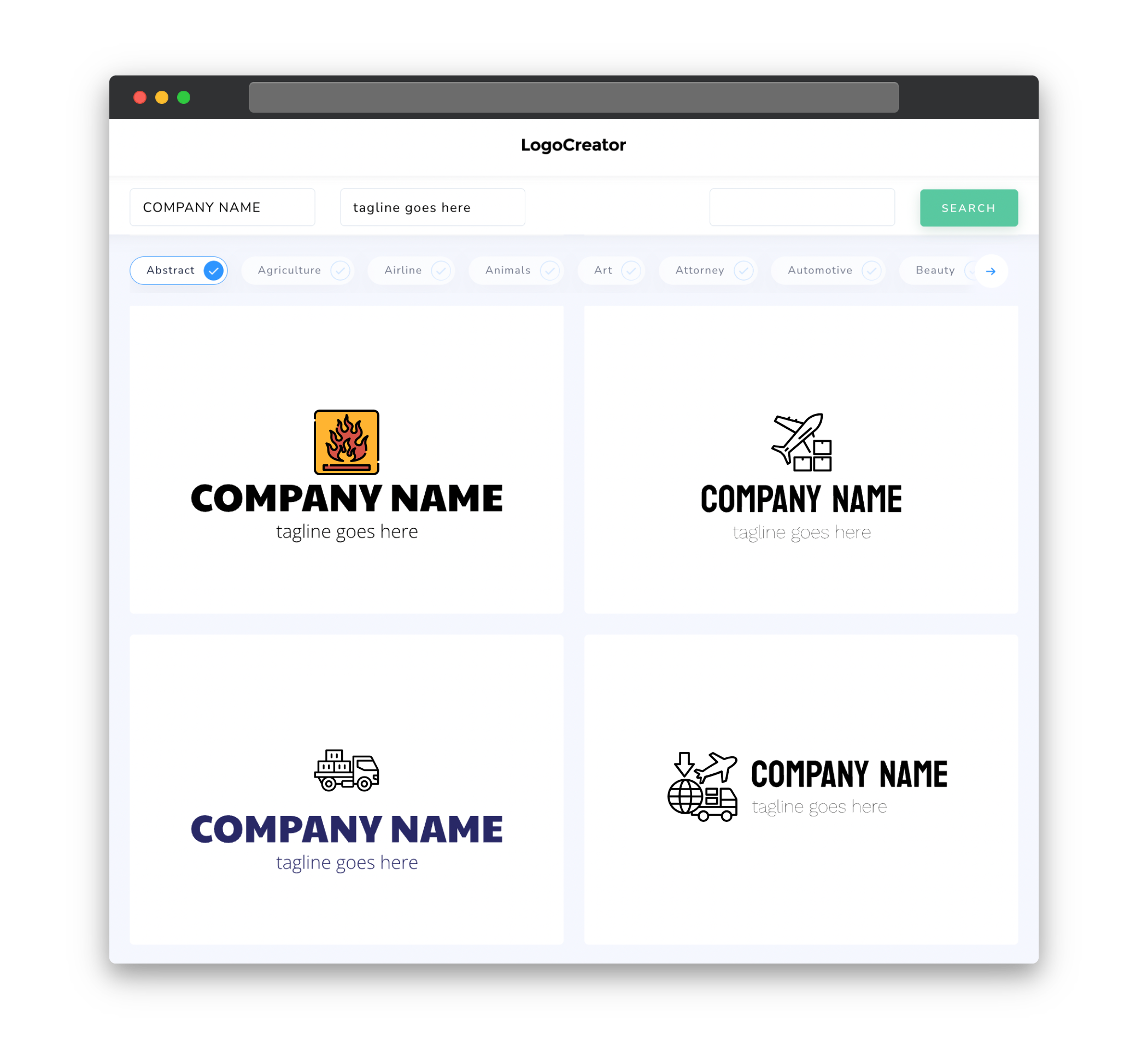Audience
When creating a freight logo, it’s essential to keep your target audience in mind. The [freight] industry serves a diverse range of customers, including manufacturers, retailers, wholesalers, and individuals. A thoughtfully designed logo can help you establish credibility and trust with your target audience. For example, you may want to use strong and bold fonts to convey reliability and professionalism. Incorporating relevant icons, such as trucks or shipping containers, can also help your audience instantly recognize your brand as part of the freight industry.
Icons
Icons play a crucial role in creating a visually appealing and memorable freight logo. They serve as visual shortcuts, instantly communicating the nature of your business. When selecting icons for your freight logo, consider using symbols that are synonymous with the industry. Transportation-related icons like trucks, cargo planes, ships, or shipping containers can represent the essence of the freight industry. These icons not only enhance the visual appeal of your logo but also make it easier for your audience to associate your brand with the services you provide.
Color
Colors have a profound impact on how your freight logo is perceived by your audience. When choosing colors for your logo, consider the emotions and associations they evoke. The freight industry is often associated with reliability, trust, and efficiency. Therefore, using colors like blue, which represents professionalism and dependability, can be a great choice. Additionally, combining blue with other colors like gray or black can further enhance the sense of stability and strength. Ultimately, the colors you choose should align with your brand identity and appeal to your target audience’s preferences.
Fonts
Fonts are an integral part of creating a visually appealing freight logo that effectively conveys your brand personality. When selecting fonts, it’s important to strike the right balance between readability and brand identity. For the freight industry, fonts that are clean, bold, and easily legible work well. Sans-serif fonts, like Arial or Helvetica, can convey a modern and professional image, while serif fonts, such as Times New Roman or Garamond, can add a touch of elegance and sophistication. Experimenting with different font combinations can help you find the perfect balance that showcases your brand’s unique identity.
Layout
The layout of your freight logo should be simple and well-structured, ensuring that it remains visually appealing and easily recognizable across different platforms. A clean and balanced layout can help create visual harmony and make your logo more memorable. Consider arranging icons and text elements in a way that is visually balanced, such as using a grid system. This will give your logo a professional and polished look. Additionally, maintaining ample spacing between the elements will improve readability and prevent visual clutter. Remember, a well-designed layout is essential for a freight logo that commands attention and leaves a lasting impression.
Usage
A well-crafted freight logo should be versatile and adaptable to different marketing materials and platforms. Whether it’s your website, business cards, letterheads, or signage, your logo should look equally impressive across all mediums. When designing your freight logo, consider its scalability. It should retain its clarity and legibility, whether displayed in small sizes or blown up on larger formats. Additionally, ensure your logo works effectively in both color and black and white. This versatility will allow your logo to maintain its impact and recognition in any application or media format.



